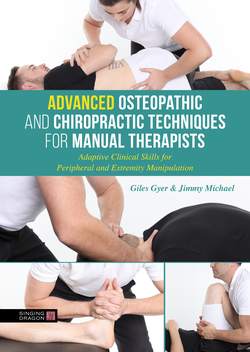Читать книгу Advanced Osteopathic and Chiropractic Techniques for Manual Therapists - Giles Gyer - Страница 11
На сайте Литреса книга снята с продажи.
Autonomic responses
ОглавлениеThe autonomic nervous system (ANS) acts largely unconsciously and controls the involuntary responses to maintain the internal body environment. It regulates several body processes (e.g., heart rate, respiratory rate, sweat and salivary secretion, blood pressure and pupillary response) and supplies various internal organs that have smooth muscle (e.g., heart, lungs, pupils, salivary glands, liver, kidneys, bladder and digestive glands). The system is regulated from the hypothalamus portion of the brain and is also in control of the underlying mechanisms during a fight-or-flight response (Cannon 1915). The ANS also has potential interaction with the nociceptive (pain) system on multiple levels, which include the brain stem, fore brain, periphery and dorsal horn (Benarroch 2006). Hence, any intervention that influences the functions of the ANS may have significant implications, as this may provide important mechanistic information and even shed some light on the possible neurophysiological mechanisms of that intervention.
In the manual therapy literature, autonomically mediated responses following spinal manipulation have been well established. A variety of outcome measures have been used to determine ANS activity after manipulation, including skin blood flow (SBF) indexes, blood pressure changes, pupillary reflex and heart rate variability (HRV). Studies performed to assess short-term changes in SBF following manipulation suggested a sympathoexcitatory effect, although this effect might be challenged because of overlooked local endothelial mechanisms regulating SBF (Zegarra-Parodi et al. 2015). Comparison of blood pressure changes pre and post manipulation has demonstrated ANS involvement (Welch and Boone 2008; Win et al. 2015). Pupillary reflex is also reported as an indicator of ANS activity (Sillevis et al. 2010). HRV is another well-established marker of cardiac autonomic neural activity, and reflects whether the sympathetic or parasympathetic branches of the ANS are influenced (Win et al. 2015). Therefore, it has been presumed that the effects of spinal manipulation on the ANS might lead to opioid-independent analgesia, influencing the reflex neural outputs on the segmental and extrasegmental levels (Sampath et al. 2015).
